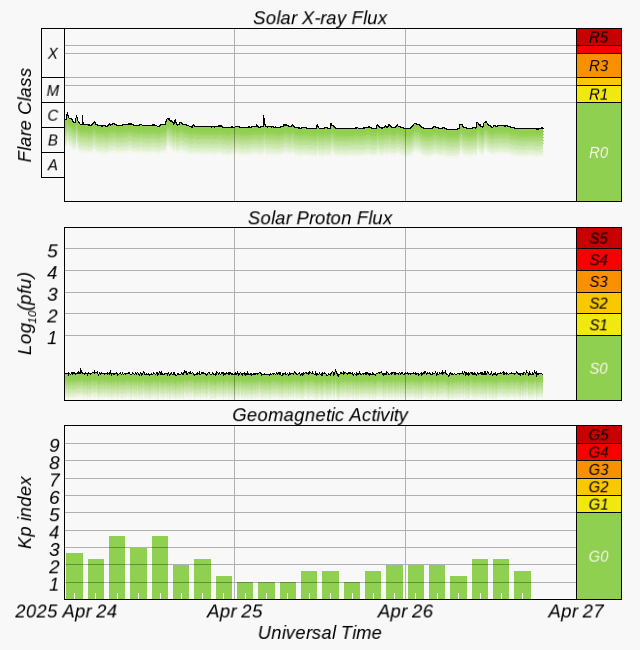Unexpected patterns and teleconnections. Some new light is shed on the workings of the solar system’s largest planetary atmosphere.
– – –
Scientists have completed the longest-ever study tracking temperatures in Jupiter’s upper troposphere, the layer of the atmosphere where the giant planet’s weather occurs and where its signature colorful striped clouds form, says Subaru Telescope.
The work, conducted over four decades by stitching together data from NASA spacecraft and ground-based telescope observations, found unexpected patterns in how temperatures of Jupiter’s belts and zones change over time.
The study is a major step toward a better understanding of what drives weather at our solar system’s largest planet and eventually being able to forecast it.
Jupiter’s troposphere has a lot in common with Earth’s: It’s where clouds form and storms churn. To understand this weather activity, scientists need to study certain properties, including wind, pressure, humidity, and temperature.
They have known since NASA’s Pioneer 10 and 11 missions in the 1970s that, in general, colder temperatures are associated with Jupiter’s lighter and whiter bands (known as zones), while the darker brown-red bands (known as belts) are locations of warmer temperatures.
But there weren’t enough data sets to understand how temperatures vary over the long-term. An international research team of planetary scientists from the National Astronomical Observatory of Japan (NAOJ), Jet Propulsion Laboratory (JPL) of NASA, University of Leicester (UK), and other institutes broke new ground by studying images of the bright infrared glow (invisible to the human eye) that rises from warmer regions of the atmosphere (upper troposphere), directly measuring Jupiter’s temperatures above the colorful clouds.
The scientists collected these images at regular intervals over three of Jupiter’s orbits around the Sun, each of which lasts 12 Earth years.
In the process, they found that Jupiter’s temperatures rise and fall following definite periods that aren’t tied to the seasons or any other cycles scientists know about. Because Jupiter has weak seasons – the planet is tilted on its axis only 3 degrees, compared to Earth’s jaunty 23.5 degrees – scientists didn’t expect to find temperatures on Jupiter varying in such regular cycles.
The study also revealed a mysterious connection between temperature shifts in regions thousands of miles apart: As temperatures went up at specific latitudes in the northern hemisphere, they went down at the same latitudes in the southern hemisphere – like a mirror image across the equator.
“That was the most surprising of all,” says Glenn Orton, senior research scientist at JPL and lead author of the study. “We found a connection between how the temperatures varied at very distant latitudes. It’s similar to a phenomenon we see on Earth, where weather and climate patterns in one region can have a noticeable influence on weather elsewhere, with the patterns of variability seemingly ‘teleconnected’ across vast distances through the atmosphere.”
The next challenge is to find out what causes these cyclical and seemingly synchronized changes.
Full article here.
– – –
Nature Astronomy article: Unexpected long-term variability in Jupiter’s tropospheric temperatures (2022)
From the abstract:
‘Here we derive upper-tropospheric (330-mbar) temperatures over 40 years, covering several orbits of Jupiter. Periodicities of 4, 7–9 and 10–14 years were discovered that involve different latitude bands and seem disconnected from seasonal changes in solar heating. Anticorrelations of variability in opposite hemispheres were particularly striking at 16°, 22° and 30° from the equator. Equatorial temperature variations are also anticorrelated with those observed 60–70 km above. Such behaviour suggests a top-down control of equatorial tropospheric temperatures from stratospheric dynamics.’







[…] From Tallbloke’s Talkshop […]
Reblogged this on Utopia, you are standing in it!.
[…] 40-Year Study Finds Mysterious Patterns in Temperatures at Jupiter […]
if Jupiter’s core is not spherical, it could be a pendulums; how about other planets and in particular Earth?
From the study:
Although intriguingly close to Jupiter’s 11.9-year orbit, the distinct 10-14-year periodicities are unlikely to be the direct result of radiative forcing in view of Jupiter’s weak seasons, particularly given the pronounced hemispherical asymmetry of temperatures peaking at 16°, 22° and 30° from the equator. [bold added]
These Jupiter findings fit nicely at the macro level with Nikolov & Zeller’s 2017 discovery that after all is said & done (forget about the smaller stuff) it is the amount of solar energy and the atmospheric mass itself that eventually determines mean global temperatures on planets. Hence reenforcing the take-away that on Earth if humans successfully change the climate in some region, say eliminating the Amazon forest thereby perhaps causing warming, there will be a responding cooling effect elsewhere on our planet leaving Earth’s mean temperature unchanged.